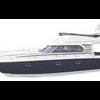Logga in för att följa detta
Följare
0

Landström 230 - 110 volt, US import
Av
Michel_Graf, i Mek & Teknik
Rekommendera Poster

Detta ämne är nu stängt för ytterligare svar.
Logga in för att följa detta
Följare
0


.jpg.b410da1076fea65f05608d8d77333dca.jpg)